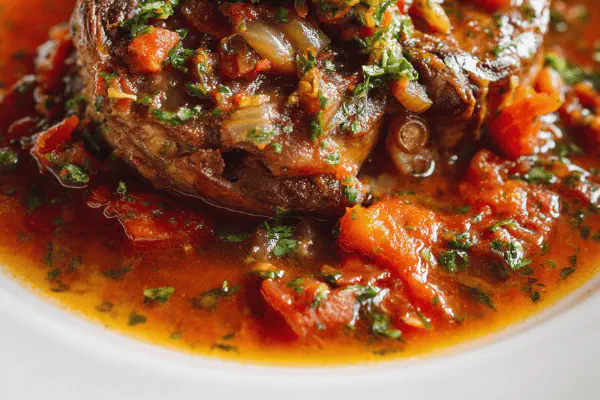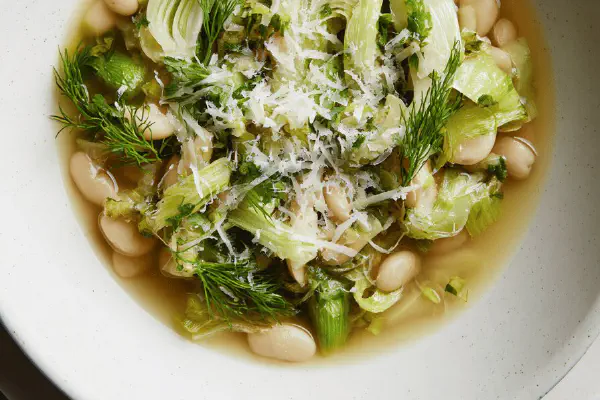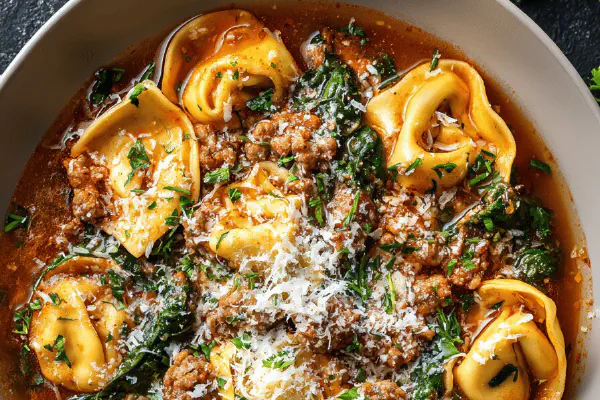Featured Recipe
Rustic Pappardelle Bolognese

By Kate
"
A slow-simmered meat sauce loaded with ground veal and beef, enriched by smoked bacon instead of pancetta, softened carrots, celery, mushrooms, and a touch of cream. A splash of dry sherry replaces wine, lending a nutty twist. Finished with fresh basil instead of parsley and tossed over wide pappardelle noodles. Watch for aromas and texture cues to know when to move on, with a thick luscious sauce that clings to pasta—all built to work in any home kitchen with common substitutions and tips to rescue. Serves eight, cooks low and slow, great for prepping in stages.
"
Prep:
35 min
Cook:
Total:
Serves:
8 servings
Italian cuisine
pasta recipes
meat sauce
comfort food
Introduction
Start with the base—the holy mix of softened onions, carrot, celery, mushrooms. No caramelizing here, gentle sweat until veggies become soft and sweet-smelling, no harsh browning or bitterness. Garlic goes late in this step to avoid burning, because burnt garlic ruins the whole pot instantly. Ground veal meets ground beef plus smoked bacon diced small. Bacon instead of pancetta adds a smokier background note. Cook meats thoroughly, break up chunks well, drain fat if it pools. Season smartly—salt early to pull flavors out but don’t overdo, pepper and chili flakes bring heat. Nutmeg pinch balances acidity and richness. Tomato paste is the flavor powerhouse here; cook it long enough to deepen, no rush. Use dry sherry instead of wine. It’s not a sweet swap but adds a complex nutty aroma. Crushed tomatoes plus beef stock simmer low and slow—with bay leaves slowly infusing. Long cook evaporates excess liquid—thick sauce should be rich and cling to pasta. Finish with cream and fresh basil for smoothness and brightness. Toss with pappardelle cooked al dente—the wide noodles hold the sauce better than thinner strands. Parmesan grates over last, salty and nutty. This one demands patience and attention to detail but pays off in deep layered flavors and satisfying texture.
Ingredients
About the ingredients
Swapping pancetta for smoked bacon is a practical choice for many kitchens; it brings a deeper smoky hint but watch salt levels as bacon is often saltier. Ground veal replaces pork for a lighter, slightly sweeter profile; if unavailable, pork can be used or omit for all-beef. Dry sherry sits in for wine to add nuttiness and cut sweetness found in most red wines, but a robust dry white wine or even a grape juice reduction trick can work if avoided. Heavy cream rounds out acidity and thickens texture, but half and half or full-fat coconut milk can substitute in a pinch, altering flavor slightly. Basil replaces parsley for a fresher, more aromatic finish. Frozen mushrooms can replace fresh if freshness is compromised, but drain excess moisture before cooking to prevent sogginess. Vegetable broth is acceptable for stock in a vegetarian twist, but meat stock brings depth. Always keep a stock pot handy for cooking liquids and hot water to loosen thickening sauces. Salt gradually, taste consistently.
Method
Technique Tips
Patience is key—don’t rush the softening of the aromatic vegetables and the tomato paste cooking time. Stir often to avoid burning, especially when cooking the tomato paste and near the end when cream is added. Monitor the simmer intensity—too high and the sauce risks drying or sticking; too low and flavors don’t concentrate. Keep the lid off during simmer to encourage evaporation; a wet sauce means dull flavors. Fat management is crucial: if excess grease is visible, drain or blot subtly to avoid greasy mouthfeel but leave enough to carry flavor. Fresh garlic heats fast, so add near end of veggie sweat. Use wooden spoon or spatula to scrape the pot’s bottom gently during simmer to catch caramelized bits—flavor gold. Don’t forget bay leaves—they’re bitter if stewed too long post cooking. Toss pasta while still hot with some sauce so it absorbs it instead of sitting separate. Taste often, adjust salt only at finish to avoid over-seasoning. Leftovers improve after time; reheat gently, adding liquid if thickened excessively.
Chef's Notes
- 💡 Use good quality meat. Ground veal brings brightness. Beef adds depth. For an all-beef option, just swap out the veal. Bacon gives a nice smoky flavor; be careful with how salty it is. Drain excess fat cautiously but keep enough for flavor.
- 💡 Monitor stove heat carefully. Start with medium for vegetables. Watch for softening, not browning. Garlic can burn fast, add near the end of sweating veggies. The right timing avoids bitterness and brings out sweet notes.
- 💡 The tomato paste is crucial here. Cook it until it deepens color, almost caramelizing edges. Thickens the sauce and adds a level of richness. Don’t rush; this step builds foundation flavors. Taste constantly as you go.
- 💡 Sherry replaces wine here. Adds a nutty aroma, different from sweet wines. If avoiding, try a dry white wine. Even grape juice might work. Each alternative shifts flavor profile but can still yield a solid result.
- 💡 Keep sauce simmering gently. Too high heat, it might dry out or stick. Low simmer lets flavors meld. Uncovered, encourages evaporation for a thick sauce. Check consistency often. Should coat back of a spoon.
Kitchen Wisdom
How can I fix a greasy sauce?
Drain excess grease carefully. Pat with a paper towel if too much pools.
Can I substitute any ingredients?
Sure! Use pork if veal is unavailable. Vegetable broth if aiming for vegetarian. Adjust seasonings as necessary.
Why is my sauce too thin?
It might need more simmering time. Stir and check for thickness. Consider adding a bit of tomato paste or reducing further.
How to store leftovers?
Refrigerate for up to four days. Freeze in portions as well if needed. Reheat with some water or broth to loosen.



